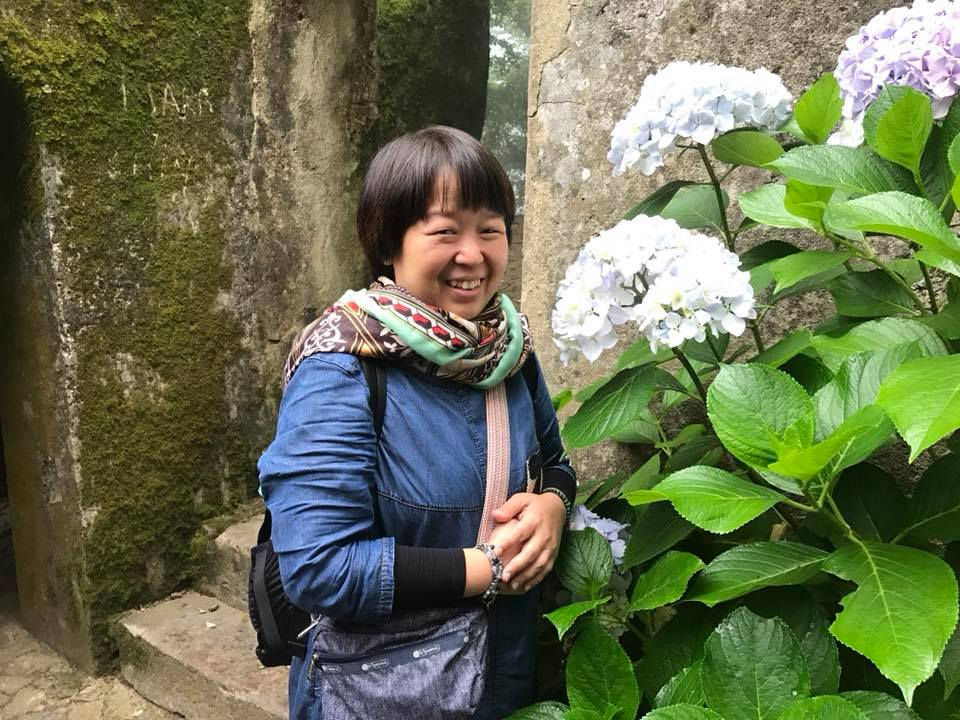Chien-Ling Chen
- Česká sekce INSEA

- Jun 25
- 3 min read
1.9 Interwoven Artistic Landscapes: Exploring Relational Aesthetics in Schools through Art Festivals and Public Art (Paper)

Chien-Ling Chen – National Taiwan Normal University/Shin-Yi Elementary School in Keelung City, Taiwan
Hui-Fan Chao – National Taiwan Normal University, Taiwan
Abstract:
Relational aesthetics emphasizes art’s connective power, exploring how it fosters relationships among people, artworks, and the environment. We explore ‘unexpected encounters’ in the context of a school art festival and public art, where such aesthetics naturally arise, evolving and blending through artistic creation and shared experiences, characterized by organic interactivity and conviviality. The Art Festival: A Magic House is a project-based learning activity in an elementary Art Talent Class (ATC). Based on the annual theme, we have led 23 ATC students in group planning and invited 300 students to participate. Emphasizing the creative process, art students take on the role of primary instructors, learning planning, demonstration, management, and interactive skills. Throughout the learning, practice, presentation, and reflection phases, ATC students experience the complexity and unpredictability of teaching, including dynamic interactions and variables. We have taken on a background role, allowing ATC students to shift from learners to active performers and instructors, and the participants experienced a new learning relationship. The flow of these experiences fosters an organic network of interaction and connections among all participants.
Vibrant Little Farmer-Gods is another public art project co-designed with an artist, focusing on a deep connection to the soil and rooted in both artistic and local significance. Together with the artist, we serve as guides and context creators, leading 180 students on a 120-day practice. Students used AI app to create five ‘Farmer-Gods’ figures – Strength, Farming, Learning, Healing, and Writing – reinterpreting the ideal rural life with elements such as herbal cabinets, lattice windows, hieroglyphics, and calligraphy, promoting a co-creative, positive campus environment. Through engagement and face-to-face listening, mutual understanding emerges, and students learn to perceive and rethink through active engagement and face-to-face listening, achieving a ‘fusion of horizons’ in interactive dialogues. Within this relational aesthetic, a shared learning platform was built, generating new connections, experiences, and insights.
6.5 From Shoulang Yam to the Pacific Ocean: An Art Curriculum Converge Natural Dyeing, Pataw Culture and Sustainable Development (Paper)
Chien-Ling Chen – National Taiwan Normal University/Shin-Yi Elementary School in Keelung City, Taiwan
Abstract:
In the art-based action research, I have developed an art curriculum using “Shoulang Yam Seawater Dyeing,” which integrates various learning disciplines and connects with the cultural history of Pataw Fishing Village in Taiwan, as well as the practice of marine environmental conservation. The “Shoulang Yam Seawater Dyeing” is an on-site learning curriculum conducted in collaboration with the Pataw Tourism Promotion Association. I lead students into the fishing village, where they engage in hands-on dyeing activities with Shoulang Yam and seawater, participate in community walks, and learn about the history and culture of the community. Building upon previous experiences and reflections from the Shoulang Yam seawater dyeing curriculum, my curriculum awareness expanded from natural plant dyeing to a focus on sustainable marine environmental development, which led to an optimized curriculum and a second round of action research. I have invited nine other teachers to design interdisciplinary curriculum that integrates art, language, social studies, integrative activities, and technology. Together, we have led 130 students on another visit to Pataw Fishing Village and its coast, where they learned about the village’s history, engaged in Shoulang Yam seawater dyeing, and expressed their understanding and responsibility toward marine conservation, sustainable development, and lifestyle choices through various forms, including art projects, storybooks in language classes, and graphic design in technology courses. The “Shoulang Yam Seawater Dyeing” curriculum goes beyond teaching a natural dyeing skill; it is an integrated program that combines interdisciplinary learning, local cultural connection, sustainability awareness, and experiential learning.



Comments